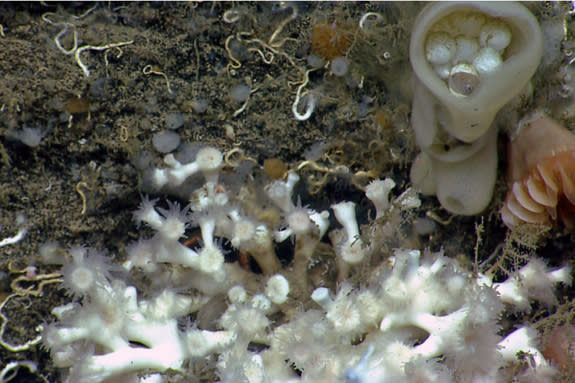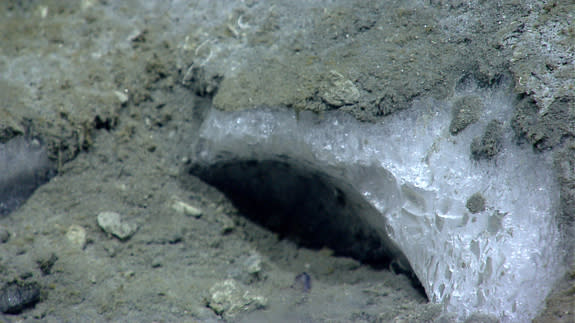Squee! Octopus Hatchling Spotted by Deep-Sea Explorer
A teeny octopus hatchling still cradled in its egg, a bubblegum pink coral and a bug-eyed bobtail squid are among the darling creatures spied by a deep-ocean explorer plying canyons off the northeastern coast of the United States.
The canyons carved into the continental slope near Nantucket, Mass., range from about 1,800 to 7,000 feet deep (550 to 2,100 meters). Currents carry sediments and nutrients into the clefts, supporting a higher diversity of marine life than the surrounding habitats, according to a National Oceanic and Atmospheric Administration (NOAA) statement. The continental slope marks the steep break between the shallow shelf near the shore and the deep ocean.
The little-explored canyons are the focus of a deep-diving expedition by NOAA's Okeanos Explorer, a research ship with a new remotely operated vehicle (ROV). Researchers are documenting the canyon geology and diverse marine communities, which help support local fisheries. [Gallery: Cutest Creatures from the Deep Sea Canyons]
The sea creatures spotted by the expedition include more than 25 deep-sea coral species, wary mother cephalopods (the taxonomic class that includes octopuses and squid) and an eel attack caught on video.
"Each canyon appeared to host different biological communities — even different depths within the same canyon would reveal different types of coral and sponge ecosystems," Tim Shank, a deep-sea biologist from Woods Hole Oceanographic Institution in Woods Hole, Mass., said in a statement. "As with any new deep-sea region we explore, we observed many suspected new species and remarkable range extensions of known species," he said.
The ship's sonar also discovered the northernmost methane-gas seeps detected to date off the U.S. Atlantic Coast. The ROV snapped photos of methane hydrates, the icy lattices that trap methane gas inside cages of frozen water.
Email Becky Oskin or follow her @beckyoskin. Follow us @livescience, Facebook & Google+. Original article on LiveScience.com.
Copyright 2013 LiveScience, a TechMediaNetwork company. All rights reserved. This material may not be published, broadcast, rewritten or redistributed.





